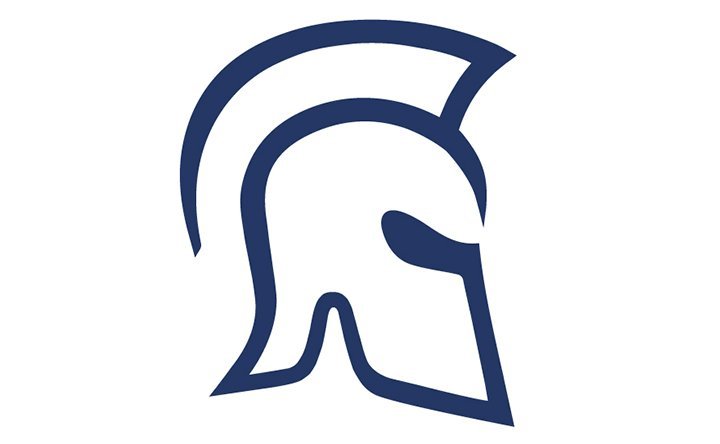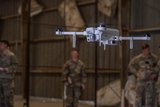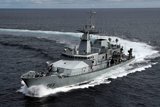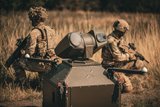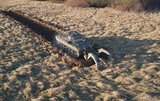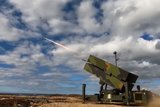How to Enhance C2 with Interoperable Communications
This article is brought to you by Bittium
In the ever-evolving landscape of military operations, tactical communications is a critical component that can mean the difference between mission success and failure. In this environment, effectiveness of command and control (C2) is best supported with resilient, interoperable, mobile, and scalable communications networks based on Software-Defined Radio (SDR) and IP technology.
As a forerunner in tactical communications, the Finnish company Bittium supports defense forces with high-performance and interoperable systems that provide seamless communications across the battlefield. The trusted solutions make up a significant part of the modern C5 systems of the Finnish Defence Forces, Austrian Armed Forces, and Estonian Defence Forces. Most recently, implementation of the solutions has started also with the Croatian Armed Forces’ Navy.
Mobility and scalability for large-scale warfare
The backbone for effective communications is built with Bittium’s Tactical Wireless IP Network (TAC WIN). TAC WIN is a modular SDR-based system, and with its elements MANET (mobile ad hoc network), link, and connection networks can be formed into one logical IP network quickly to support large-scale warfare.
Most times, legacy communication solutions are too hierarchical in their structure and cannot offer mobility and scalability for the network. Providing enhanced routing is one of the key factors in meeting the requirements. Bittium's approach to routing between networks is to provide a single routing domain where single routing protocol handles the routes of the entire network. Network is flat without hierarchy, which enables always optimal route selection.
TAC WIN system is running the TAC WIN Waveform and it is designed to automatically find optimal routes for communications by using the Bittium OLSR (Optimized Link State Routing) protocol. The TAC WIN Waveform also provides interoperability with the next-generation and secure Bittium Tough SDR soldier and vehicular radios that seamlessly extend the communications to lower echelons. In addition to TAC WIN and Tough SDR platforms, the versatile Bittium Tough Comnode device also supports the same routing protocol. As the solutions are based on IP technology, interoperability with 3rd party IP-based solutions is straightforward.
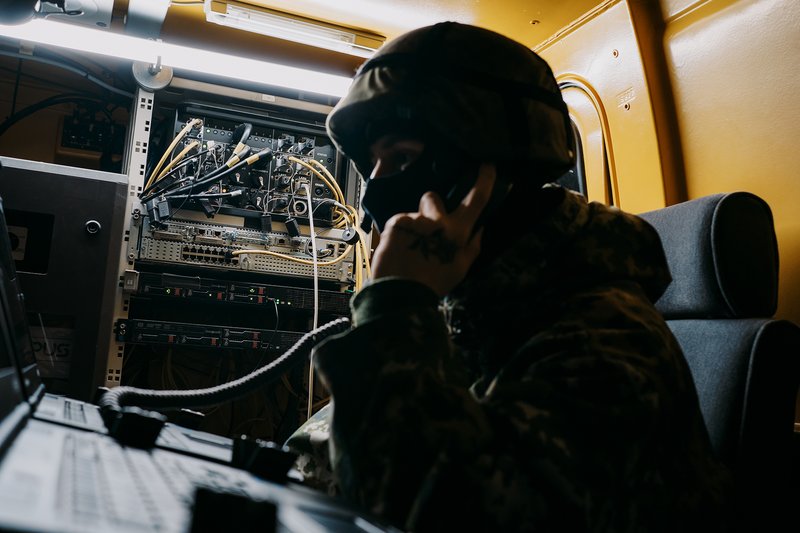
Above: Bittium’s solutions use enhanced routing to support mobility and scalability of the networks (Source: Bittium)
Multi-domain and coalition interoperability
Bittium’ solutions enable broadband communications between different branches of the defense forces, for example in multi-domain operations on land and at sea. The TAC WIN backbone network at land can be extended for naval use cases on the coastline by selecting the optimal TAC WIN Radio Heads for the purpose. The network is extended further to navy vessels with Tough SDR radios using the same TAC WIN Waveform. The optimized Bittium OLSR MANET routing is supported by all the radios as well as with wired connections.
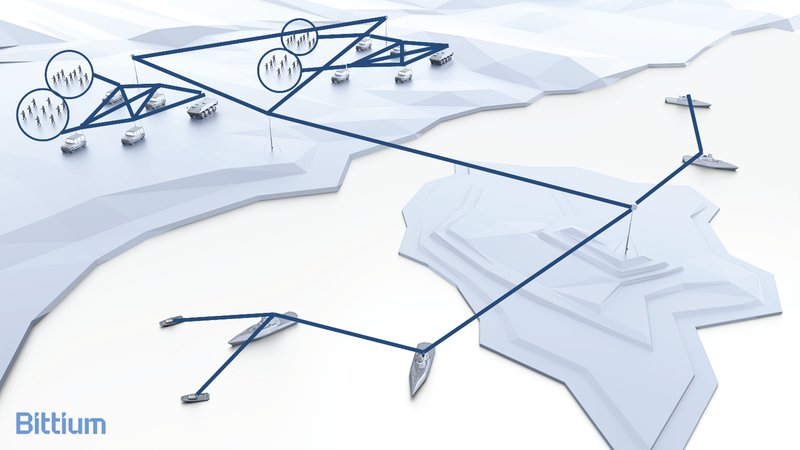
Above: Communications in multi-domain environment offers a significant advantage for command and control (Source: Bittium)
Interoperability can also be extended beyond national joint operations. NATO coalition troops achieve interoperability in tactical communications with Bittium Tough SDR radios by using the ESSOR High Data Rate Waveform (EHDRWF). The EHDRWF was adopted as a standard (STANAG 5651) by NATO in October 2023 as well as by the Federated Mission Networking as a preferred waveform for radio interoperability during operation.
Of the ESSOR participating states (Finland, France, Germany, Italy, Poland, and Spain), Finland was one of the first countries to successfully complete national approval tests with Bittium’s Tough SDR radios. In addition to Bittium, members of the a4ESSOR consortium responsible for the development of the waveform include Indra (Spain), Leonardo (Italy), Radmor (Poland), Rohde & Schwarz (Germany), and Thales (France).
More information on Bittium’s solutions is available here and at Eurosatory, Hall 6 H144 (Finnish pavilion).
More from Industry Spotlights
-
![Levelling up – how autonomous fire control tackles unmanned lethality head-on]()
Levelling up – how autonomous fire control tackles unmanned lethality head-on
As autonomous weapon systems proliferate, it is now essential to use the same core technologies to counteract and neutralise them.
-
![Evolving for the future fight]()
Evolving for the future fight
Built on a 60-year heritage of providing the Department of Defense with solutions to dominate the electromagnetic spectrum.
-
![How AI and robotics drive innovation in land-based defence]()
How AI and robotics drive innovation in land-based defence
The future on the frontlines: automation and AI isn’t just about improving efficiency or driving down labour cost - for Pearson Engineering it’s everything.
-
![How satcom is shaping the future of fast, accurate warfare (podcast)]()
How satcom is shaping the future of fast, accurate warfare (podcast)
"Speed is the key advantage and accuracy is the key outcome": Amazon Kuiper Government Solutions’ Rick Freeman talks to Shephard’s Georgia Lewis about how space-as-a-service is transforming defence connectivity and access to satellite capabilities.
-
![How do land and air defense forces defend against complex threats?]()
How do land and air defense forces defend against complex threats?
Learn how RTX systems defend against complex attacks from adversaries including hostile drones, and multi-range missiles.






